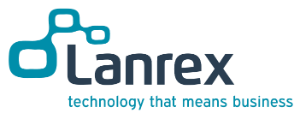Cloud migration, Office 365, Dynamics, Digital Workspaces…. We know IT can feel overwhelming.
With the right implementation, IT can become your greatest advantage, helping you achieve:
- Time — The average Australian small business devotes a third of its time to administration that IT systems can take over.
- Better Communication — IT provides a number of channels for employees and managers to coordinate in real time.
- Better Storage - You can use your IT system to store and organise valuable data.
Interested? Here’s how you can optimise IT for your firm:
Step 1: Plot Your Processes
Before you implement new technology, you must first map out everything your business does. This will allow you to base your IT purchases and upgrades on your firm’s specific needs.
Begin by identifying the products and services that you provide to consumers, and then explore how all of your operations contribute to this end. When you’ve completed that, ask yourself what information is required for each step to proceed. Understanding the tasks in your business and the links between them is key to helping you fit the right IT tools into your business.
As you survey your company’s activities, take note of operations that are especially expensive or use up a particularly large amount of your employees’ time. It is in these areas that IT has the most potential to save money or boost productivity. Also pay attention to any complaints you have had from past customers, as well as products that do not sell well. Consider how IT might allow you to resolve such complaints and better produce and market such products.
Step 2: IT Investigations
Once you have a clear map of all your company’s functions, identify the role of technology at every point. Being by making a list of all the IT products you currently use, what they do, and any past issues that they have had. Then, list all the things you would like to achieve through your IT system. The goal is not to implement every item on the list but to get a range of options to improve business.
When the list is done, rank each item according to its importance. Take into account the amount of money that each change can save or generate, as well as how quickly it will accomplish that.
Step 3: Options Overview
Now that you know where you can benefit from IT, start researching the available technologies to see what your options are. Look for equipment and programs that will fulfil as many of your goals at once. More established products like Microsoft Office 365 are generally more reliable and easier to for staff to pick up, but be prepared to pay a bit more for this freedom.
It’s important to be realistic about what new technology will offer. No device or program can accomplish all your goals on its own. Weigh the cost of IT against the benefits of its capabilities. An expensive product should be able to pay for itself by reducing costs elsewhere or generating greater revenues.
Step 4: Seeking Staff Feedback
Given that the members of your staff are the ones who will be using the new technology, consult them before you make any purchases. Ask for input on what functions they need from an IT system, and make sure they are confident in their ability to learn the new products.
Step 5: Expert Engagement
Between 50 and 80 percent of large technology endeavours fail — therefore, it’s essential that you consult an expert throughout the upgrade process. A professional can use their extensive experience to illuminate exactly how IT aligns with your unique business goals. They can also help you train your staff to use the new technology, organise your information, and periodically assess the quality of your systems.
If you are interested in getting some direction or just want some more information on how you can fuel your business growth through IT, contact us here.

We’re creating a business that provides unlimited potential for our team. We believe that each and every team member has an equal opportunity to play a strategic and impactful role.
GET IN TOUCH